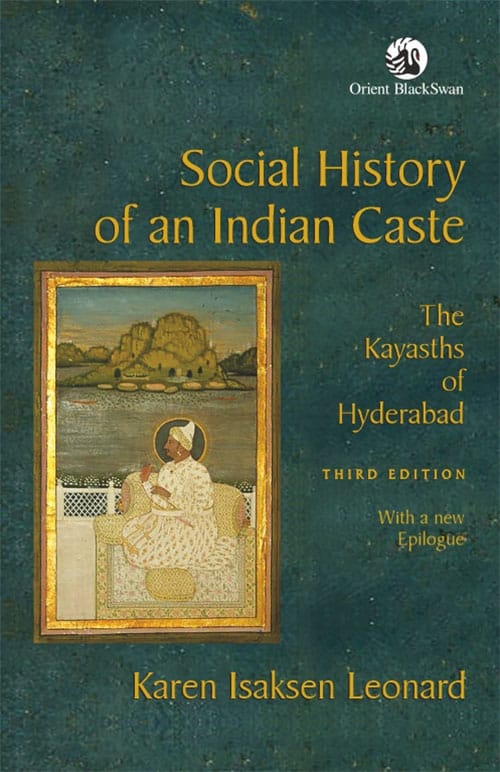Daneesh Majid
Hyderabad: Be it 1724 when Asaf Jahi rule began in Hyderabad or the present day, Kayasths remain integral to the social and cultural landscape of the city.
During the release of the third of edition of historian and anthropologist Karen Isaksen Leonard’s book Social History of an Indian Caste: The Kayasths of Hyderabad, audiences were attuned to their contributions in making Hyderabad a cosmopolitan city. The book’s publishers Orient Black Swan had organized a panel discussion with the author and prominent scholars like Dr. Oudesh Rani Bawa and Sajjad Shahid.
Herself a Kayasth, Rani delved into the origins of her caste that does not fall into any of the traditional varnas of Brahmin, Kshatriya, Vaishya and Shudra. Bawa mentioned the etymology behind the name of this unique caste. “The name Kayasth was given by Chanakya to denote that the fact that one of our ancestors married outside of his caste and thereby his kaya, meaning body in Sanskrit, become ast, lost its identity.”
Bawa also mentioned that not only did Kayasths learn and become well-versed with Farsi which they taught it as well.
Then noted city cultural historian Sajjad Shahid further elaborated on the community’s different sub-castes, the roles they played in the Nizam’s era and some of the specific Old City neighbourhoods they lived in. “The book is basically an essence of the trips Karen has made in the last 55 years assimilating into and showcasing Hyderabad’s Ganga-Jamuni tehzeeb or cosmopolitan culture through this community that co-existed alongside Muslims.”
He also recalled a particular anecdote during Police Action when Rai Mehboob Narayan, a prominent Kayasth, was mistaken for a Muslim by rioters who targeted Muslims, due to his shervani or long coat. Shahid narrated, “Because the shervani is sometimes deemed as Muslim attire, Narayan said that ‘Wallah Miyan, main Hindu hoon,’ thereby confusing the rioters.”
Leonard extolled this secular culture of Hyderabad which was on display during the Million March against the Citizenship (Amendment) Act. “As someone who has really taken in Hyderabadi culture, I was proud of the Hyderabadi humour on signs and the offering of sweets to the police,” she praised.
The scholar who taught at the University of California—Irvine and is the author of Locating Home: India’s Hyderabadis Abroad also hoped that the city remains cosmopolitan and communally harmonious.

